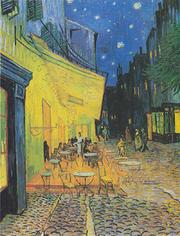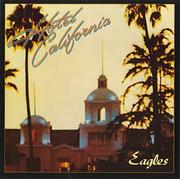Starry Night: Meaning of the Vincent Van Gogh Landscape Painting
BY K Shabi Updated 08 Oct 2021 PUBLISHED 04 Jun 2013
Starry Night (1889) by Dutch artist Vincent Van Gogh is one of the most famous and reproduced works of art in the world today. Aptly named for its swirling night sky filled with dazzling stars, the secret hidden meaning behind the painting is not easily identifiable at first glance. What is the true hidden message and meaning of Vincent Van Gogh's Impressionist masterpiece Starry Night?

Vincent Van Gogh's Life & the History Behind Starry Night
Was Vincent Van Gogh crazy? It's no secret that Vincent Van Gogh struggled with mental health issues and insanity throughout his life. The now legendary story of Van Gogh cutting off his ear after a fight with his friend, the French artist Paul Gauguin, has become one of the most popular anecdotes in art history. The incident supposedly occurred in winter 1888, the year before Van Gogh painted Starry Night and not long before his mysterious death, seemingly by suicide, in 1890. Van Gogh was committed to a mental health asylum in Saint-Rémy, France soon after the ear incident. Most art history scholars believe that Van Gogh painted Starry Night while in the psychiatric hospital and that the famous landscape in the painting is the view Van Gogh enjoyed from his bedroom window. Does Van Gogh's lifelong struggle with insanity and mental illness contribute anything else to the meaning of Starry Night?
Van Gogh: Art Between Impressionism and Expressionism
Sadly for Van Gogh, it wasn't just those who heard the story about him cutting off his ear who thought the painter was insane. Art critics at the time, who had a big say in making and breaking the careers of struggling artists, were also convinced that Van Gogh's signature artistic style and technique, characterized by bright, heavy brushstrokes, was sloppy, crude and childish — just not as good as some of the art painted by his peers and contemporaries. For the most part, other mid-nineteenth century painters were still interested in objectivity and realism, carefully painting landscapes and portraits that showed off their technical skills. Van Gogh, on the other hand, liked to paint fast and used his exaggerated and expressive brushstrokes to visualize his own experience, thus revealing his personal feelings about the subjects he painted.
Van Gogh is now one of the most famous artists of all time and is widely recognized for paving the way for Expressionism, Surrealism and the more progressive art movements of the twentieth century. However, his art was largely unappreciated and unknown during his lifetime. The negative emotions and feelings of failure Van Gogh must have experienced as a struggling and unappreciated artist come through in Starry Night and color the overall meaning of the painting. Yet there is more to the story and the meaning of Vincent Van Gogh's Starry Night than just insanity, failure and tragedy. Perhaps the real reason why Starry Night is so famous and appreciated today is not due to the negative emotions and experiences that may have originally surrounded the artist, but the simple message of hope and faith that shines through.
Religious Interpretation of Vincent Van Gogh's Starry Night
Some art history scholars believe there is a religious hidden meaning to Starry Night. With his father a pastor and his uncle a theologian, Van Gogh came from a religious background and even served as a missionary in his younger days before devoting himself to art. In Starry Night, a church steeple stands out prominently above the smaller buildings in the shadowy town below. The moon and stars of the night sky are surrounded by large glowing halos of light. In art history, halos carry a strong religious meaning and were typically used to imply divinity and holiness. Halos appear often in pre-Renaissance art around the heads of key Biblical figures including Jesus Christ, Mary the Madonna, Moses and others.
Van Gogh never abandoned his curiosity about religion. In a personal letter from 1888, the year before Starry Night was painted, Van Gogh described "a great starlit vault of heaven...one can only call God." Was Van Gogh already planning and conceptualizing Starry Night at the time of this letter's writing? Starry Night was not Van Gogh's first starry night painting. In 1888, Van Gogh painted Starry Night over the Rhone and Café Terrace at Night. Both paintings feature a bold blue sky adorned with big, bright stars. What was it about the idea of a starry night that inspired Van Gogh to revisit the topic again and again?
Biblical Meaning of Vincent Van Gogh's Most Famous Art: A Genesis Quote?
There may be a secret Biblical meaning painted into Starry Night. Why did Van Gogh paint exactly 11 stars? By including exactly eleven stars in Starry Night Van Gogh may have been alluding to Genesis 37:9, a key verse in the biblical account of Joseph. In the Bible, Joseph is characterized as a "dreamer." An outcast, Joseph is ostracized and ultimately betrayed by his eleven brothers, suffering through many hardships and years of imprisonment. It is not hard to see why Van Gogh might have identified with the Biblical character of Joseph as there are basic parallels in their stories. As an artist, Van Gogh was also mostly shunned and rejected by his artistic peers. Later in life, he was confined to the Saint-Rémy asylum in France, far away from his homeland and the art community he once had.

Starry Night: A Secret Message to the Art Critics
Is there any other meaning behind these eleven stars? It’s easy to see how Van Gogh could relate to the story of an outcast and a dreamer who didn't experience a lot of luck early in life, but there might be more than just religious meaning in Van Gogh's reference to this specific Bible verse. Is it possible the painting also contains a secret message for his art critics? In Genesis 37:9, Joseph believes his dream is prophetic and that the eleven stars, symbolic of his brothers, will "bow down" to him in the future. Did Van Gogh, like Joseph, believe that one day the tables would turn? Perhaps Van Gogh intended for Starry Night to work as a personal statement concerning his own poor critical reception as an artist. If so, did Van Gogh paint himself into the artwork?
Van Gogh's Cypress: A Self-Portrait with Autobiographical Meaning?
If the 11 stars of Starry Night symbolize Van Gogh's critics, where is Vincent Van Gogh in the painting? While open for interpretation, there is evidence that Van Gogh saw himself in the looming cypress trees featured prominently in the foreground of the painting. Like daffodils and starry nights, cyprus trees grew everywhere in Saint-Rémy and reappear in several of Van Gogh’s paintings, most notably in Cypresses and Wheat Field with Cypresses, both from 1889. In a letter to his brother, Van Gogh mentioned his curious fascination with the trees, stating, "The cypresses are always occupying my thoughts."
The large cypress in Starry Night is the most eye-catching but at the same time ambiguous figure in the painting. Its towering presence contrasts heavily against the brightly colored stars, with its dark creeping limbs reaching up for the luminescent night sky above. Do the stars bow down to this formidable cypress? As Starry Night was painted near the end of Van Gogh's life, the depressed artist may have identified with this awkward, shadowy figure standing tall even in the company of brighter, shinier objects that may attract more attention. In this way, Starry Night can truly function as a symbolic self-portrait of the artist Vincent Van Gogh.
The True Meaning of Van Gogh's Starry Night Painting Explained
What is the hidden meaning of Van Gogh's Starry Night? In some ways, Starry Night has more meaning today than it did when it was first painted in 1889. If we want to see it, we can find a magical and even prophetic meaning in this painting. While Van Gogh died a poor struggling artist, he is now one of the most reproduced painters today. In some ways now more than just a painting, Starry Night has also been immortalized in the popular song "Vincent (Starry, Starry Night)" by Don McLean. Although he died before he could see it for himself, Van Gogh hopefully would be happy with the far-reaching fame and recognition his art now enjoys today. Perhaps Van Gogh’s dream really did come true.







